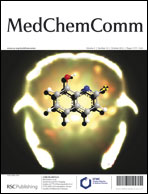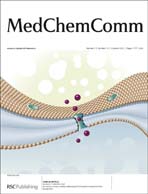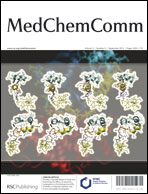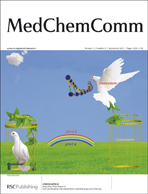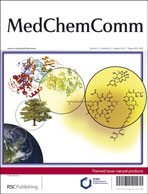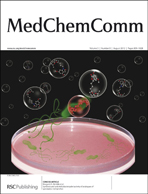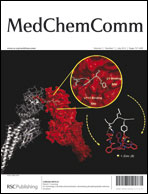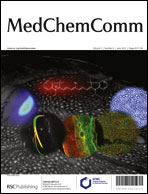Wecome to MedChemComm Issue 11, 2012
![GA[1]](https://blogs.rsc.org/md/files/2012/10/GA1.gif) Featuring on the front cover of this issue of MedChemComm is the work of Hansjörg Streicher and colleagues who report the strong and selective binding of 2 types of gold nanoparticles, decorated with the oseltamivir (aka TamifluTM) pharmacophore, to wild-type and resistant influenza virus strains. Streicher et al. describe how the particles interact with the virus neuraminidase rather than the hemagglutinin and could serve as a vantage point for novel influenza virus sensors.
Featuring on the front cover of this issue of MedChemComm is the work of Hansjörg Streicher and colleagues who report the strong and selective binding of 2 types of gold nanoparticles, decorated with the oseltamivir (aka TamifluTM) pharmacophore, to wild-type and resistant influenza virus strains. Streicher et al. describe how the particles interact with the virus neuraminidase rather than the hemagglutinin and could serve as a vantage point for novel influenza virus sensors.
‘TamiGold’: phospha-oseltamivir-stabilised gold nanoparticles as the basis for influenza therapeutics and diagnostics targeting the neuraminidase (instead of the hemagglutinin)
Mathew Stanley, Nicholas Cattle, John McCauley, Stephen R. Martin, Abdul Rashid, Robert A. Field, Benoit Carbain and Hansjörg Streicher
DOI: 10.1039/C2MD20034A
![GA[9]](https://blogs.rsc.org/md/files/2012/10/GA91.gif) The inside front cover illustrates work by Ahmed Kamal et al. (CSIR-Indian Institute of Chemical Technology, Hyderabad), who have synthesized a new series of tetrazole based isoxazolines that show promising activity as tubulin polymerization inhibitors that could be developed for the treatment of cancer.
The inside front cover illustrates work by Ahmed Kamal et al. (CSIR-Indian Institute of Chemical Technology, Hyderabad), who have synthesized a new series of tetrazole based isoxazolines that show promising activity as tubulin polymerization inhibitors that could be developed for the treatment of cancer.
Synthesis of tetrazole–isoxazoline hybrids as a new class of tubulin polymerization inhibitors
Ahmed Kamal, A. Viswanath, M. Janaki Ramaiah, J. N. S. R. C. Murty, Farheen Sultana, G. Ramakrishna, Jaki R. Tamboli, S. N. C. V. L. Pushpavalli, Dhananjaya pal, Chandan Kishor, Anthony Addlagatta and Manika pal Bhadra
DOI: 10.1039/C2MD20085F
Enjoy FREE access to both articles for the next 6 weeks
Also in this issue, why not read the following 2 review articles:
Small molecules targeting phosphoinositide 3-kinases
Peng Wu and Yongzhou Hu
Med. Chem. Commun., 2012, 3, 1337-1355
DOI: 10.1039/C2MD20044A
Diaryl ether derivatives as anticancer agents – a review
Florence Bedos-Belval, Anne Rouch, Corinne Vanucci-Bacqué and Michel Baltas
Med. Chem. Commun., 2012, 3, 1356-1372
DOI: 10.1039/C2MD20199B
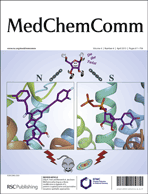











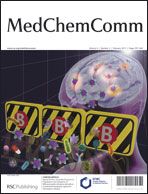
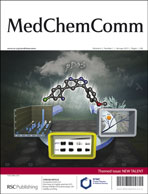
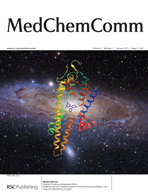
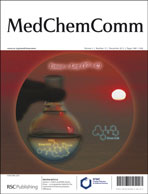
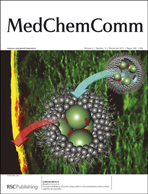
![GA[1]](https://blogs.rsc.org/md/files/2012/10/GA1.gif)
![GA[9]](https://blogs.rsc.org/md/files/2012/10/GA91.gif)
